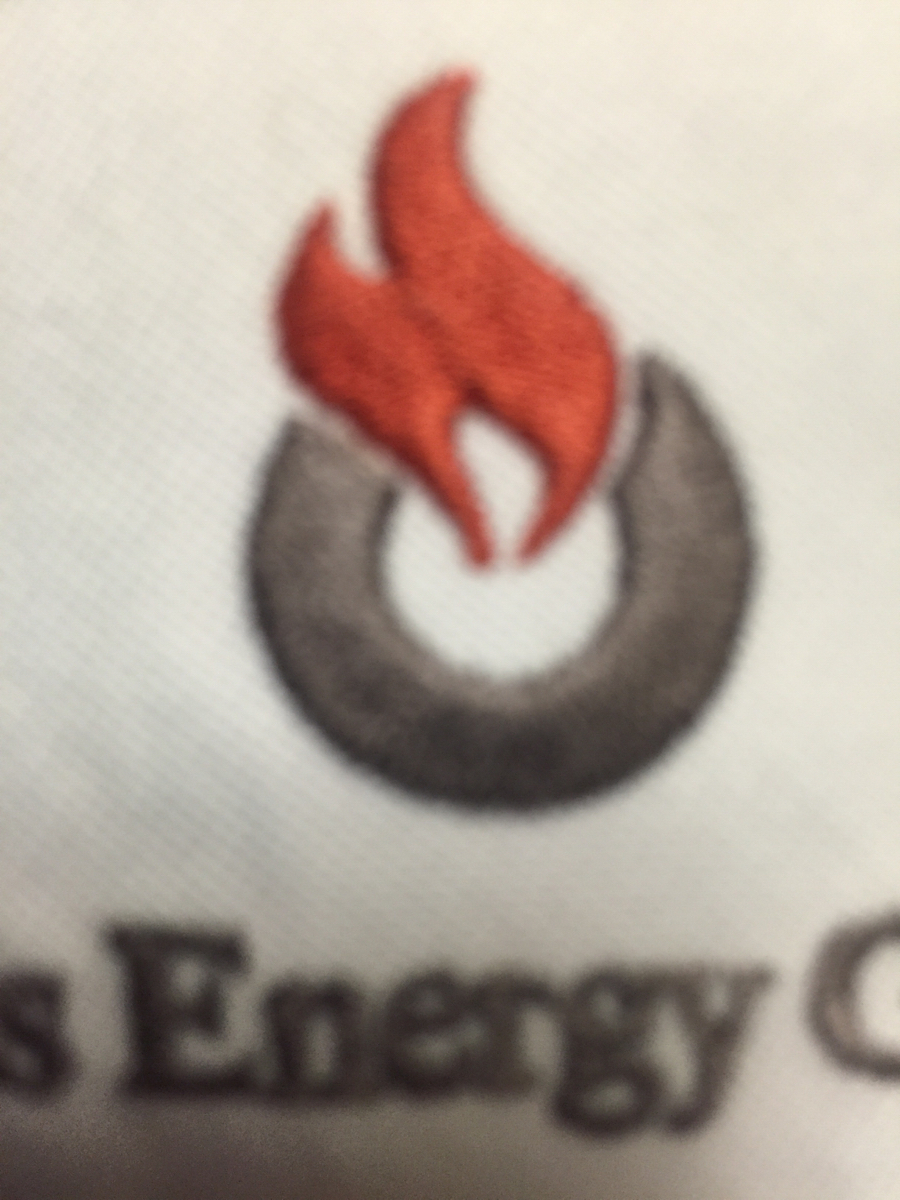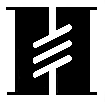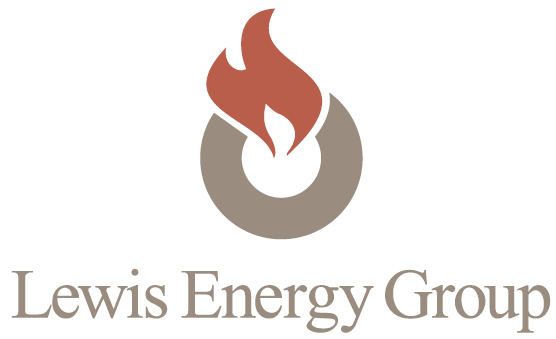Information
-
Document No.
-
Audit Title
-
Client / Site
-
Conducted on
-
Prepared by
-
Location
-
Personnel
-
M1.1 RECEIPT AND STORAGE OF COMPONENTS
-
M1.1.1 Bulk delivery of base oils by ships
-
Are there dedicated reception line?
-
Are there piggable reception lines?
-
Can the receiving product tanks be mixed?
-
Can the receiving product tanks be heated?
-
Are all discharge lines labelled?
-
Is a check of the receiving tank made to confirm that the material will be discharged into the tank intended?
-
Are shipment always accompanied by a Quality Certificate (containing all of the 'S' test + crude source and process) together with sealed samples of each grade?
-
Are these QCs checked against LQS specification of base oils?
-
Are top, middle and bottom samples taken from each compartment of the ship?
-
Is the bottom sample tested for free water/deposits?
-
Are middle sample tested for the following properties?<br>- Appearance<br>- Density<br>- Flash point<br>- Kinematic viscosity @ 40 or 100 deg C<br>- VI<br>- Colour<br>- Demulsification number
-
Are quantities checked by dipping ship tanks before and after delivery?
-
Are any discrepancies followed up?
-
Are measurement devices calibrated and certified to a national/international standard?
-
Are samples taken at the start of discharge and their appearance recorded?
-
Are samples taken during discharge and appearance recorded?
-
On completion of discharge, are the base oil tanks homogenised?
-
After homogenisation, are samples taken from the tanks and if so, are the following tests conducted?<br>- Appearance<br>- Density<br>- Flash Point<br>- Kinematic viscosity @ 40 or 100 deg C<br>- VI<br>- Colour<br>- Pour Point
-
If bulk base oils are received contaminated with water is the base oil tested for salt content?
-
Are there adequate procedures/hardware for removing water from wet base oils?
-
M1.1.2 Drummed deliveries of base oils
-
Where there is a good history of reliable supplies from supplier, a CoA accompanies the delivery and seals are intact;<br> Are the values on the CoA checked against the LQS<br> Are base oils spot-checked against List B properties?
-
Where there is not a good history of reliable supplies from the supplier or where the CoA does not accompany the delivery or where seals are broken:<br> Are products tested according to the properties marked 'P' in the specification?
-
M1.1.3 Shipments of base oils by road/rail
-
Are these QCs checked against LQS specification for base oils?
-
Are shipments always accompanied by a Quality Certificate (containing all of the 'S' tests + crude source and process) together with sealed samples of each grade?
-
Are all discharge line labelled?
-
Is single sample taken from each compartment?
-
Are these samples tested for the following?<br>- Appearance<br>- Density<br>- Flash Point<br>- Kinematic viscosity @ 40 or 100 deg C<br>- VI<br>- Colour<br>- Demulsification number
-
Are delivered quantities checked and are any discrepancies followed up?
-
Are measurement devices calibrated and certification to a national/international standard?
-
On completion of discharge, are the base oil tanks homogenised?
-
After homogenisation, are sample taken from the tanks and if so, are the following test conducted?<br>- Appearance<br>- Density<br>- Flash point<br>- Kinematic viscosity @ 40 or 100 deg C<br>- VI<br>- Colour<br>- Pour Point
-
If bulk base oils are received contaminated with water is base oil tested for salt content?
-
Are there adequate procedures for removing water from wet base oils?
-
Are base oil samples retained for minimum of 6 months?
-
M1.1.4 Bulk bridging of base oils
-
Where base oils are transported in non-dedicated vehicles, or where the vehicle is not sealed after loading, is full testing procedure carried out?
-
Where base oils are transported in vehicles dedicated to base oils, and where the vehicle sealed after loading and seals are intact upon arrival, is the viscosity of and appearance of middle samples checked?
-
After discharge and homogenisation, is the viscosity of the base oil tank middle sample determined?
-
M1.1.5 Bulk deliveries of additives by ship
-
Are there piggable reception lines?
-
Are there dedicated reception lines?
-
Are the reception lines labelled?
-
Can the receiving product tanks be mixed?
-
Can the receiving product tanks be heated?
-
Are shipments always accompanied by a Quality Certificate (containing all of the 'S' tests) together with a sealed sample of product?
-
When additives are received by ship are top, middle and bottom samples taken from each compartment?
-
Are bottom samples examined visually for water?
-
Are middle samples tested against items marked 'P' in the additive specification, or by checking IR spectrum against a reference?
-
On completion of discharge, are the additive tanks homogenised?
-
After homogenisation, are samples taken from the tanks tested against 'P' items in the specification?
-
M1.1.6 Drummed deliveries of additives
-
Where there is a good history of reliable supplies from the supplier, a CoA accompanies the delivery and seals are intact:<br> Are the value on the CoA checked against the LQS?
-
Where there is not a good history of reliable supplies from supplier or where CoA does not accompany the delivery or where seals are broken:<br> Are additives tested according to the properties marked 'P' in the specification?
-
M1.1.7 Deliveries of additives by road/rail
-
Are shipments always accompanied by a Quality Certificate (containing all of the 'S' tests + crude source and process) together with sealed samples of each grade?
-
Are these QCs checked against LQS specifications for the additives?
-
Are all discharge lines labelled?
-
Is a single sample taken from each compartment?
-
Are these samples tested against 'P' items in the specification?
-
Are delivered quantities checked and are any discrepancies followed up?
-
Are measurement devices calibrated and certificated to a national/international standard?
-
On completion of discharge, are the additive tanks homogenised?
-
After homogenisation, are samples taken from the tanks and checked for kinematic viscosity and appearance?
-
Are additive samples retained for a minimum of 6 months?
-
M1.1.8 Deliveries of packed lubricants
-
Are consignments of packed lubricants inspected to ensure that seals are intact, batch numbers are legible and packaging is in a satisfactory state?
-
M1.1.9 Bulk deliveries of lubricants
-
Are there dedicated reception lines?<br>
-
Are the reception lines labelled?
-
Are there piggable reception lines?
-
Are shipments always accompanied by a Quality Certificate?
-
When products are received by ship are top, middle and bottom samples taken from each compartment?
-
Are bottom samples examined visually for water?
-
Is the viscosity of middle samples tested together with any other critical properties?
-
On completion of discharge, are the storage tanks homogenised?
-
After homogenisation, where there is a good history of supply, is the CoA compared with the LQS? Are samples taken from the tanks and their viscosities measured?
-
M1.1.10 Receipt of packaging
-
Are all packaging consignments accompanied by a Certificate of Conformance?
-
Is each consignment inspected according to an agreed sampling plan?
-
Is all packaging inspected on receipt to check that there has been no significant damage, corrosion, ingress of dirt or moisture and that the shipment has been correctly identified?
-
Are visual checks made to ensure compliance with specifications and decoration standards?
-
Are appropriate procedures in place to handle off specification packaging?
-
M1.1.11 General
-
When dedicated bulk storage tanks are changed, are tanks run down to a minimum before new additives/products are discharged? Are tanks circulated and sampled after discharge?
-
Are additive storage tank temperatures monitored? Are safety mechanisms to prevent overheating in place?
-
When receiving base oils from a different supply source into a storage tank, are ‘Handling and Approval of Base Oil Mixtures’ guidelines followed?
-
M1.1.12 Hazards in Materials Handling
-
Are the handling recommendations for each additive/base oil adhered to?
-
M1.2 BLENDING AND MANUFACTURE
-
M1.2.1 Compatibility matrix
-
Is it appropriate for the product portfolio currently blended?
-
Is there a compatibility matrix available in the blending area?
-
Does it identify appropriate flushing requirements?
-
Is the compatibility matrix properly adhered to?
-
M1.2.2 Operating procedures
-
Do the blending procedures minimise the amount of flushing oil generated?
-
Are there adequate written blending procedures?
-
In plants where there is a blending header is the last component added a base oil?
-
Are anti-foam agents prepared in the form of a concentrate using an approved diluent?
-
Are there appropriate procedures for dissolving solids?
-
Are all measuring devices (load cells, scales etc.) calibrated on a regular basis?
-
Are adequate calibration records kept?
-
Are all calibrated devices labelled as such?
-
On completion of blending is an adequate sampling procedure being followed?
-
Is batch release adequately controlled?
-
Is there a satisfactory procedure to correct off-specification blends?
-
Is the reason for off-specification blends adequately investigated to prevent further occurrence?
-
Is the incidence of off-specification blends reducing?
-
Are the rules for blending with dyes followed?
-
Are staged blend sampling procedures followed?
-
Is there any blending of two oils of different viscosity grades to produce a third grade (32 + 68 = 46)?
-
Are transfers via hose exchange managed using LQS rules?
-
Is ‘live blending’ performed process managed using LQS rules?
-
M1.2.2 Operating procedures
-
Does the blending note contain all of the following information?<br>Product<br>Batch size<br>Formulation details<br>Batch number<br>Blending vessel identity<br>Date<br>Actual quantity of component addition
-
Is each blend approved (signed off) by the laboratory chemist?
-
Is the addition of untestable components properly witnessed (signature on blend note)?
-
M1.2.4 Blend optimisation
-
Before a new formulation is blended, is a lab blend prepared and tested to check that it meets the blend controls?
-
Is the formulation optimised (VII concentration, ppd concentration) in the laboratory?
-
Are formulations adjusted when base oils change?
-
Are base oils with viscosities closest to the viscosity of the finished blend always used (no dumbbell blends)?
-
M1.2.5 Safety
-
Are operators aware of the THRs of additives and the nature of the protection required when they are handling these additives?
-
Do operators make use of the protective equipment?
-
Where low flash components are used, are appropriate precautions taken? (Temperature not to exceed flash point. No air blowing)
-
M1.2.6 Speciality fluids
-
If water or oxilube based fluids are blended, are the operating procedures sufficient to prevent product intercontamination?
-
Are proper procedures in place to prevent cross contamination of emulsifiable fluids with conventional oils?
-
Are turbine oils blended on segregated equipment?
-
Are there special procedures for the treatment of electrical oils in bulk (e.g. vacuum filtration)?
-
Is there a dedicated system for handling medicinal white oils?
-
M1.2.7 Use of Flush Oils
-
Are flush oils used as components of blends? If so, is this identified on the blend documentation?
-
Are flush oils tested and approved by the laboratory prior to use?
-
Are flushing and filling run ends used in another blend using the same additive system or are they collected into 'compatible' groups and used according to the LQS guidelines?
-
Is segregation of flush oils maintained by the facility? If so, how?
-
M1.2.8 Use of the blending facilities
-
Identify the 5 highest volume products. Is optimum use of the blending facilities made to produce these lubricants?
-
M1.3 FILLING
-
M1.3.1 Filling procedures
-
Is a product compatibility chart available in the filling area?
-
Are appropriate samples taken from the filling line before filling commences?
-
Are samples obtained during long continuous runs (+8 hours)?
-
Is laboratory approval sought before product is filled?
-
Are comparisons made between the viscosity results of the blend and fill samples (1% rule)?
-
Is there an adequate written procedure for line clearing when grades are changed?
-
Where filling proceeds before laboratory testing is completed are the first packs/drums filled marked?
-
Are filled packs inspected and their weights checked on a regular basis?
-
Where drums have been part filled are they clearly labelled?
-
Are quantity measuring devices calibrated and certificated to a national or international standard?
-
Is any line washout segregated into properly labelled collection facilities?
-
Are batch/filling code numbers marked on all packs?
-
Are reconditioned drums used meet the LQS guidelines?
-
Are ‘special products’ filled at the location (e.g., AeroShell, turbine, electrical oils) which require special filling equipment or precautions?
-
M1.3.2 Transfer lines
-
Are there dedicated or sphered/pigged lines from the blending vessel to the holding tank and to the filling lines?
-
Are the spheres/pigs used?
-
Are connecting hoses at the hose exchange self draining?
-
Have contamination trials been completed to determine the volume of product required for effective flushing of each of the filling lines?
-
Does each filling line incorporate a self-draining filter?
-
Is this filter checked regularly?
-
M1.3.3 Flushings, line washout and slops
-
Are flushing and filling run ends used in another blend using the same additive system or are they collected into 'compatible' groups and used according to the LQS guidelines?
-
Is line washout used according to LQS (provided that the limits of the compatibility matrix are not exceeded?)
-
If flushing oil, filling run ends or line washout is used in a blend is this recorded on the blend note?
-
Are flush oils tested and approved by the laboratory prior to use?
-
M1.3.4 Contract filling
-
Where product is transported in bulk from the LOBP to a contract filler, are all the bulk loading requirements covered?
-
Do the procedures in place at the contract filler make proper provision for sampling, QC testing and use of flushings, line washout and slops?
-
Do trained personnel carry out regular audits of the contractor facilities?
-
M1.3.5 Repackaging
-
Where blended products are purchased in bulk for repackaging, do the facilities meet LQS requirements?
-
Is a filling point sample checked for appearance, odour and viscosity and compared with a representative sample from the product before repacking?
-
M1.3.6 Bulk loading procedures
-
Are there adequate written procedures for filling products in bulk?
-
Before loading, is the inside of all containers adequately inspected? Is the inspection documented?
-
Are there adequate provisions for cleaning containers, which have been used for transporting products other than lubricants?
-
Are samples from bulk containers taken for laboratory testing for appearance, odour and viscosity?
-
Is a sample retained until the product has been delivered to the customer?
-
Are samples labelled with the required information?
-
Are adequate instructions provided to the driver on discharge of incompatible products?
-
Is product delivered in bulk assigned a unique code (identifying batch number, blending/filling records, etc.?
-
Are trucks sealed as required?
-
Are appropriate safety and environmental measures in place to prevent employee, driver, or site harm?
-
M1.3.7 Bulk loading transfer lines
-
Are there dedicated or sphered/pigged lines from the holding tank to the bulk filling line?
-
Are the spheres/pigs used?
-
Are connecting hoses at the hose exchange self draining?
-
Have contamination trials been completed to determine the volume of product required for effective flushing of the bulk filling line?
-
Does the loading arm incorporate a self-draining filter?
-
Are pipelines clearly labelled at the loading gantry
-
M1.4 LABORATORY
-
M1.4.1 General
-
Is the laboratory dedicated to the LOBP?
-
Is the laboratory accredited against any national or international standard?
-
Is Statistical Process Control (SPC) implemented?
-
Has any reduced testing been implemented?
-
Does the laboratory hold up-to-date copies (or have access to Ecopies) of the following documents:<br>LQS<br>ASTM/IP/SMS<br>Neither
-
M1.4.3 Laboratory records
-
Are records kept of all samples analysed in the laboratory?
-
Are all laboratory records held for a minimum of at least 3 years?
-
Does the laboratory hold copies of base oil and additive CoAs? Confirm that the source of base oils provided in Questionnaire is identical to base oil receipts.
-
Does the laboratory hold copies of additive Material Safety Data Sheets (MSDSs)?
-
Is HSE related information accurately conveyed to Plant staff?
-
Does the laboratory keep a record of suppliers' performance history?
-
Does the laboratory keep a record of suppliers' performance history?
-
Is laboratory approval always given before product is released from the LOBP?
-
Is the LQS kept up-to-date? Are LQS revisions communicated to appropriate personnel?
-
M1.4.4 Calibration
-
Is all quality-sensitive equipment calibrated according to a formal procedure?<br>Stopwatches<br>Thermometers<br>Vk tubes<br>Balances<br>Gas diffuser stones<br>Hydrometers<br>Flow meters<br>Sensors<br>Rotational speed devices<br>
-
Are formal calibration records kept? Is a calibration schedule maintained?
-
Is all calibrated equipment marked with the date of calibration and the date of the next calibration?
-
Are secondary standards (reference oils) used to verify equipment calibration for critical laboratory equipment?
-
M1.4.5 Retained samples
-
Are appropriate samples of components and finished products held for a period of at least 6 months?
-
Are retention samples held in a dedicated room?
-
Are retention samples held for at least 6 months?
-
Are retention samples inspected regularly?
-
Are records kept of samples exhibiting instability and communicated to Product Management?
-
Are samples stored in clear bottles?
-
M1.4.6 Laboratory safety
-
1. Is protective equipment used when handling hazardous substances - Laboratory coat, safety shoes, goggles, and gloves
-
2. Are safety showers and eye wash installed?
-
3. Are there fire extinguishers and fire blankets? Are the laboratory staff trained to use this equipment?
-
Are flammable substances clearly labelled and stored?
-
5. Are gas cylinders kept outdoors? Are they properly secured and labelled?
-
6. Are there proper fire-proofed extractors in washrooms or area where solvents are used?
-
7. Do the fume cupboards have fire proofed switches and extractors?
-
8. Is the solvent store at least 15 m away from any building?
-
9. How are used solvents kept and disposed of?
-
10. Are corrosive substances properly labelled?
-
11. Are acids and alkalis stored separate to each other?<br>
-
12. Are large liquid containers kept at floor level?
-
13. Are appropriate spillage trays used for containing spilled chemicals?
-
14. Are there properly marked emergency exits? Are they lit in the dark? Do all the exit doors open outward?
-
15. Is the laboratory restricted to authorised persons only?
-
16. Are any of the staff trained for first aid and is there a first aid box in the laboratory?
-
17. Is there an automatic fire alarm installed?
-
18. Is there an emergency procedure?
-
M1.4.7 Laboratory Correlation Scheme for Lubricants
-
Is the laboratory currently participating in this scheme?
-
M1.5 SELECTION AND MONITORING OF SUPPLIERS
-
M1.5.1 General
-
Are records of ‘Approved Suppliers’ maintained?
-
Is on-going performance monitoring of suppliers carried out?
-
Are unacceptable products and services of Packaging Suppliers discussed with LSC?
-
M1.5.2 Assessment of Suppliers
-
Are suppliers selected on the basis of a combination of their ability to supply to specification requirements, registration to a recognised Quality System standard or on-site assessment?
-
M1.5.3 Base Oil Suppliers
-
Are approved base oil suppliers used?
-
Are any unapproved 3P base oil suppliers used?
-
M1.5.4 Selection and Approval of Additive Suppliers
-
Are only the additive options listed in the LQS used for blending branded lubricants?
-
Are all additives received with LUBAD designation numbers?
-
Are suppliers of commodity additives approved by Product Management prior to use?
-
When formulations use either “Approved Technical Material” (ATM) or “Technical Equivalent” (TE), are only these members used as ingredients of blends?
-
M1.5.5 Packaging Suppliers
-
Do all packaging suppliers operate a formal quality system?
-
Are specifications comprising General Packaging Specification and Container Data Sheet for each packaging type agreed in all respects and formally accepted by the supplier?
-
M1.5.6 3p blenders and fillers used by the LOBP
-
Are all non-Shell blenders or fillers approved by SIPC prior to manufacture of products?
-
Are full Appraisals performed at these 3P facilities immediately before production commences?
-
Is there any blending of two oils of different viscosity grades to produce a third grade (32 + 68 = 46)?
-
M1.6 FINISHED PRODUCTS
-
M1.6.1 General
-
1. Are any of the following products stored in the open? (Plant walk)<br>b. Insulating oils<br>c. Refrigerator oils<br>d. White and medicinal oils<br>e. AeroShell oils and compounds<br>f. Neat cutting oils containing fatty acids or compounds which may solidify when cold
-
2. Is the age of the stock monitored? Is re-testing of time-expired stock performed (after 4/2 years)?
-
M1.7 OTHER GENERAL ACTIVITIES
-
Are changes to plant hardware recorded in new P+I diagrams?
-
Are records protected from loss or damage?
-
Other Comments
-
Add media













